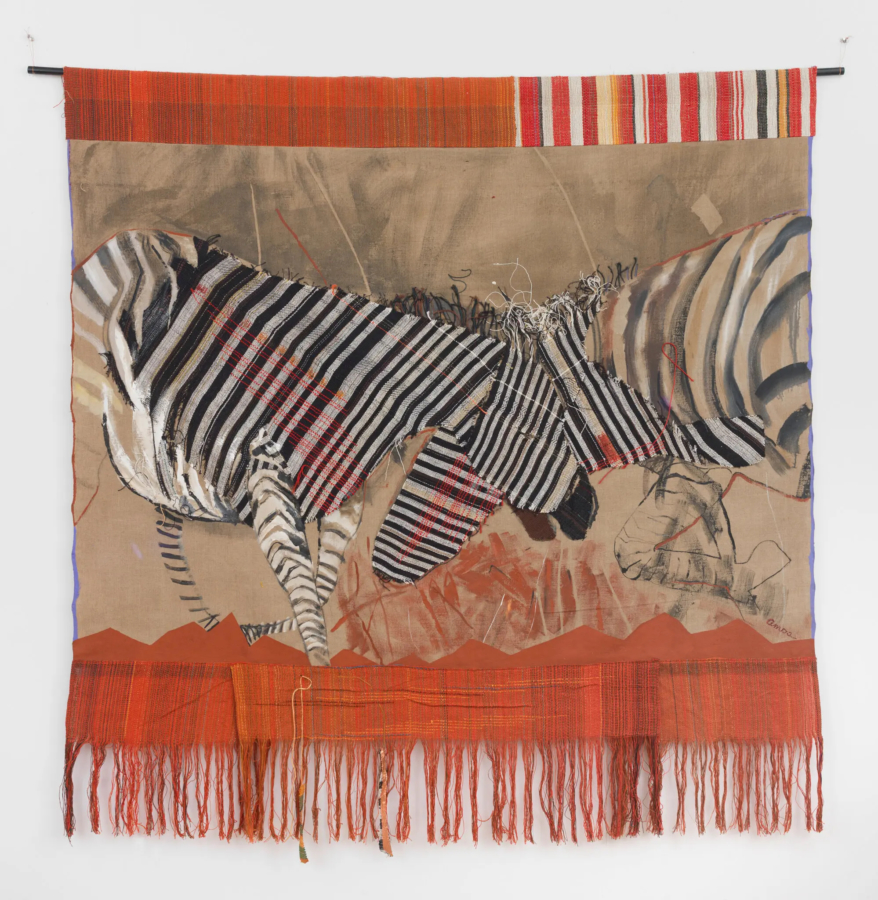October 27, 2022
Download as PDF
View on The New York Times

Emma Amos’s “Zebras,” circa 1980, acrylic on canvas with hand-woven fabric, in the exhibition “Painting in New York: 1971-83” at Karma Gallery. Credit: Emma Amos, via RYAN LEE Gallery
The 30 female artists featured in “Painting in New York: 1971-83” might be surprised to find themselves in the same room together. Abstract canvases sit alongside depictions of human figures. Traditional paint is augmented or replaced by other materials. Curated by Ivy Shapiro, it is a terrific and illuminating presentation.
Emma Amos’s “Zebras” (circa 1980) is painted on a handmade fabric, combining weaving with the more conventional pigment application. Joan Semmel’s “Erotic Yellow” (1973) features a semi-explicit image of an interracial couple. Faith Ringgold’s geometrically abstract canvasses from 1974 are displayed with a soft sculpture featuring three figures. Ellen Phelan’s “Untitled (Water Wheel),” from the 1970s, is propped in the middle of the room. Ida Applebroog’s two “paintings” are actually executed on see-through vellum.
Many well-known artists are here, including Elizabeth Murray, Susan Rothenberg, Pat Steir, Dorothea Rockburne, Howardena Pindell and Mary Heilmann. Some of the most exciting works, however, are by lesser-known ones like Betty Blayton, Vivian Browne and Martha Diamond.
On the wall, Shapiro offers a stellar presentation of painting in an age when the medium was disparaged, and much of the work looks incredibly fresh today. Beyond this, you can only imagine some of the arguments brewing around aesthetics, feminism, race and sexuality, since the painters included here were from older generations than Shapiro’s, with plenty of their own artistic feuds and factions. Perhaps these will be addressed in the forthcoming catalog, which features essays by luminary critics like Hilton Als and Lucy Lippard.



